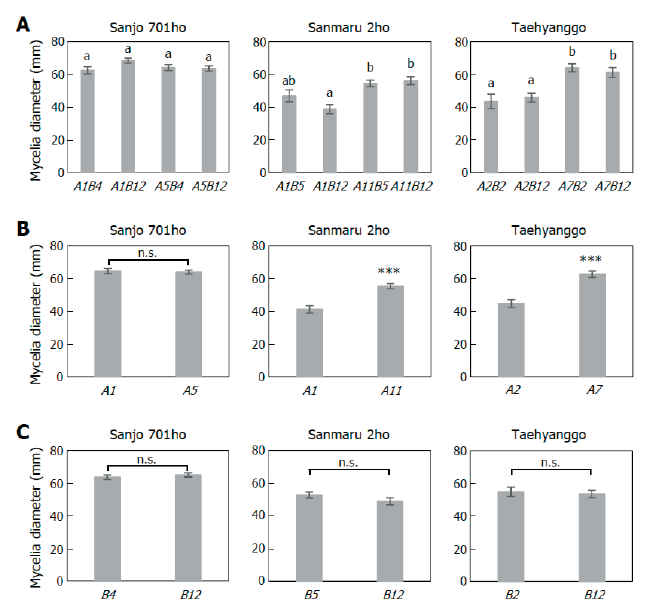Abstract
Figures & Tables

Fig. 1. Dependence of mycelial growth rate on A mating type. Mycelia diameter of basidiospore-derived monokaryons harboring each mating type was measured after 14 d of growth at 25℃ under dark conditions. Bars, standard error. (A) Mycelia diameter of monokaryons with four different mating types. The letters, a and b, indicate statistically significant differences based on one-way ANOVA with Tukey’s HSD test (<005). (B and C) Mycelia diameter of monokaryons with different A (B) or B mating types (C). Asterisks indicate statistically significant difference using Student’s t-test (***, <0.001). n.s.,not significant.


